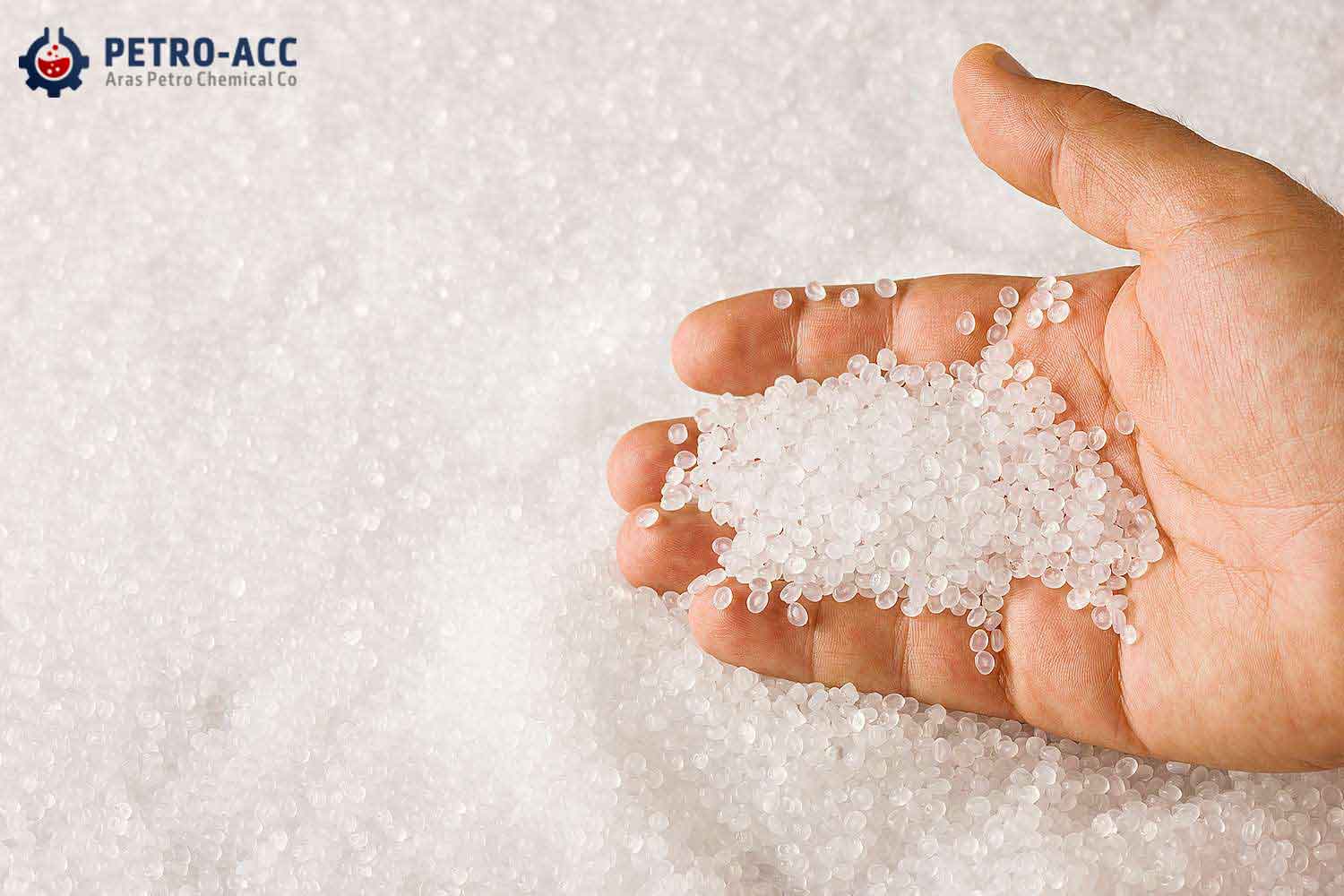Project Description
Polypropylene is a versatile thermoplastic polymer commonly used in various industries and applications. It is known for its exceptional chemical resistance, high melting point, and low density. Polypropylene is lightweight, durable, and has excellent electrical insulation properties.
Due to its wide range of properties, polypropylene is employed in diverse products such as packaging materials, automotive parts, textiles, medical devices, household goods, and construction materials. Its resistance to moisture, acids, and bases makes it suitable for containers, bottles, and food packaging.
Polypropylene is also used in the production of fibers and textiles, including carpets, upholstery, and geotextiles. Its resistance to UV radiation makes it suitable for outdoor applications such as ropes, outdoor furniture, and automotive components.
In terms of processing, polypropylene can be molded, extruded, and formed into various shapes. It can be recycled, contributing to sustainability efforts. However, it is worth noting that polypropylene has limitations when it comes to high-temperature applications and can be prone to UV degradation.
| Name | Polypropylene |
| Manufacturer | ARAS PETROCHEMICAL |
| Made By | PETRO-ACC |
| Product Code | PE1102 |
POLYPROPYLENE FEATURES
Polypropylene is a versatile thermoplastic polymer known for its unique features. Here are some key characteristics of polypropylene:
- Lightweight: Polypropylene is a lightweight material, making it ideal for applications where weight reduction is important, such as automotive components and packaging.
- High chemical resistance: Polypropylene exhibits excellent resistance to a wide range of chemicals, including acids, alkalis, and solvents. This property makes it suitable for use in chemical processing and storage applications.
- Good mechanical properties: PP offers good strength, toughness, and stiffness, making it suitable for a variety of structural and load-bearing applications.
- Low moisture absorption: PP has low moisture absorption properties, making it resistant to water and moisture-related damage. This makes it suitable for outdoor applications and environments with high humidity.
- Thermal stability: PP has a high melting point and can withstand high temperatures, making it suitable for applications that require heat resistance, such as automotive parts and appliances.
- Electrical insulation: PP is an excellent electrical insulator, making it suitable for electrical and electronic applications where insulation properties are crucial.
- Recyclability: Polypropylene is highly recyclable and can be reused multiple times without a significant loss in its properties. This recyclability makes it an environmentally friendly choice.
- Cost-effective: Polypropylene is relatively inexpensive compared to other engineering plastics, making it a cost-effective option for various applications.
POLYPROPYLENE TECHNICAL DETAILS
Here are some key technical details about polypropylene:
- Chemical Structure: PP is a linear hydrocarbon polymer, consisting of repeated propylene monomer units. Its chemical formula is (C3H6)n, where n represents the number of repeating units.
- Physical Properties: Polypropylene is a lightweight material with a low density ranging from 0.895 to 0.92 g/cm³. It has a high melting point of approximately 160-170°C, making it suitable for applications requiring heat resistance. PP is also known for its excellent resistance to fatigue, impact, and stress cracking.
- Mechanical Strength: PP exhibits good mechanical properties, including high tensile strength, stiffness, and toughness. It has a tensile strength ranging from 30 to 50 MPa and Young’s modulus of about 1.5 GPa.
- Chemical Resistance: PP has excellent chemical resistance, making it resistant to many acids, alkalis, and organic solvents. However, it is less resistant to strong oxidizing agents and aromatic hydrocarbons.
- Thermal Stability: PP has good thermal stability, with a relatively low coefficient of thermal expansion. It can withstand temperatures up to 100°C without significant deformation or degradation. However, prolonged exposure to high temperatures can cause dimensional changes and reduced mechanical properties.
- Electrical Properties: PP is an excellent electrical insulator and has a low dielectric constant and loss factor. It retains its electrical properties over a wide range of frequencies and temperatures, making it suitable for electrical and electronic applications.
- Processing Methods: Polypropylene can be processed using various techniques, including injection molding, blow molding, extrusion, and thermoforming. It can be easily molded into complex shapes and has good flow properties during processing.
- Applications: Polypropylene finds extensive use in a wide range of applications, such as packaging (e.g., bottles, containers), automotive parts, household goods, textiles, medical devices, and electrical components.
POLYPROPYLENE APPLICATIONS
Here are some common applications of polypropylene:
- Packaging: Polypropylene is extensively used in packaging materials such as bottles, containers, caps, and films. It offers excellent resistance to moisture, chemicals, and impact, making it suitable for food packaging, medical packaging, and industrial packaging.
- Automotive: Polypropylene is used in the automotive industry for interior and exterior components. It is utilized in manufacturing bumpers, dashboard trims, door panels, interior linings, and battery cases due to its lightweight, durability, and resistance to heat and chemicals.
- Textiles: PP fibers are employed in the textile industry for various applications. They are used to produce carpets, upholstery fabrics, geotextiles, and ropes. Polypropylene fibers are known for their strength, resistance to moisture, and quick-drying properties.
- Medical: PP finds application in the medical field for the production of surgical instruments, syringes, vials, and medical packaging. It is favored for its chemical resistance, low toxicity, and ability to withstand autoclave sterilization.
- Electrical and Electronics: PP is used in the electrical and electronics industry for cable insulation, capacitors, battery casings, and appliance components. It provides good electrical insulation properties, heat resistance, and dimensional stability.
- Household and Consumer Goods: PP is utilized in the production of various household and consumer goods such as furniture, toys, appliances, and storage containers. It offers durability, impact resistance, and ease of processing.
- Agriculture: Polypropylene is widely used in agricultural applications such as agricultural films, crop covers, twines, and nets. It provides protection against UV radiation, maintains soil moisture, and helps in weed control.
- Building and Construction: Polypropylene is employed in the construction industry for applications like pipes, fittings, roofing membranes, insulation materials, and geotextiles. Its properties of chemical resistance, durability, and low moisture absorption make it suitable for these applications.
- Stationery and Packaging: PP is used in the manufacturing of stationery items like folders, binders, sheet protectors, and packaging materials such as blister packs and clamshell packaging.
- Sports and Recreation: Polypropylene is used in various sports and recreational equipment, including kayaks, skis, snowboards, and stadium seats. It provides lightweight, impact resistance, and good dimensional stability.
POLYPROPYLENE FORMULATION
The formulation of polypropylene involves the addition of various additives to enhance specific characteristics and tailor the material for specific purposes.
Some common additives used in polypropylene formulation include:
- Stabilizers: These additives help protect the polymer from degradation caused by exposure to heat, light, and other environmental factors.
- Antioxidants: They prevent the oxidation of PP, which can lead to degradation and a decrease in mechanical properties.
- Fillers: Fillers such as talc, glass fibers, or mineral powders can be added to improve stiffness, dimensional stability, and reduce cost.
- Impact modifiers: These additives enhance the toughness and impact resistance of polypropylene, making it less prone to cracking or breaking under impact loads.
- Lubricants: Lubricants improve the processability of PP during manufacturing and reduce friction between the polymer and processing equipment.
- Pigments: Pigments are added to provide color to the polypropylene, allowing for aesthetic customization.
- Flame retardants: These additives help reduce the flammability of PP, making it more suitable for applications where fire safety is a concern.
POLYPROPYLENE PACKING
Polypropylene packing refers to packaging materials made from polypropylene, a thermoplastic polymer. Polypropylene is known for its high strength, durability, and chemical resistance, making it a popular choice for various packaging applications.
PP packing can come in the form of bags, films, sheets, or containers. It is commonly used for packaging a wide range of products, including food, beverages, pharmaceuticals, electronics, and industrial goods. The material’s versatility allows it to be used for both primary and secondary packaging purposes.
PP packing offers several advantages. It is lightweight, moisture-resistant, and has excellent clarity, allowing for easy visibility of packaged items. It also provides good barrier properties, protecting the contents from external factors such as moisture, light, and oxygen. Additionally, polypropylene is recyclable, making it an environmentally friendly choice for packaging.
POLYPROPYLENE STORAGE CONDITION
When it comes to storing polypropylene itself, the following conditions are recommended:
- Temperature: PP should be stored at room temperature, typically between 20°C and 25°C (68°F and 77°F). Extreme temperature variations should be avoided as they can affect the material’s properties.
- Humidity: PP is resistant to moisture absorption, but it is still advisable to store it in a dry environment to prevent any potential degradation or surface damage.
- Light exposure: Polypropylene is resistant to sunlight and UV radiation. However, prolonged exposure to direct sunlight can cause some degradation, so it is recommended to store polypropylene items away from direct sunlight or use UV-protective coatings if necessary.
- Chemicals: Polypropylene is resistant to many chemicals but may be affected by some solvents and oxidizing agents. To ensure proper storage, keep polypropylene away from substances that could potentially interact with or damage it.
- Physical protection: Properly stack and store polypropylene items to prevent deformation or damage. Avoid placing heavy objects on top of polypropylene containers or subjecting them to excessive pressure.
POLYPROPYLENE SPECIFICATION
Polypropylene (PP) is a versatile thermoplastic polymer with several specifications:
- Chemical Composition: Polypropylene is a polymer made up of repeating units of propylene monomers (C3H6).
- Molecular Structure: PP has a linear molecular structure, with a relatively high degree of crystallinity, which gives it excellent strength and rigidity.
- Melting Point: The melting point of PP typically ranges from 130 to 171 degrees Celsius (266 to 340 degrees Fahrenheit), depending on the grade and additives used.
- Density: PP has a relatively low density, ranging from 0.895 to 0.92 g/cm³, which contributes to its lightweight properties.
- Tensile Strength: PP offers good tensile strength, typically ranging from 25 to 40 MPa (megapascals), making it suitable for various applications.
- Flexibility and Impact Resistance: PP exhibits excellent flexibility and impact resistance, allowing it to withstand repeated bending and impacts without breaking or deforming.
- Chemical Resistance: Polypropylene is resistant to a wide range of chemicals, including acids, alkalis, and solvents, making it suitable for various chemical-resistant applications.
- Moisture Resistance: PP has low moisture absorption, which helps maintain its mechanical properties even in humid or wet environments.
- Transparency: PP can be manufactured in both transparent and opaque forms, depending on the additives and processing methods used.
- Electrical Insulation: PP is an excellent electrical insulator, making it suitable for electrical and electronic applications.
- Food Contact Safety: PP is widely used in food packaging and containers due to its non-toxic nature and its ability to withstand high temperatures during sterilization.
- Recycling: Polypropylene is recyclable and can be reprocessed into new products, contributing to sustainability efforts.



